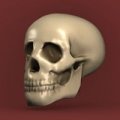The architects office where I work (K2S Architects, Helsinki) has just won a big architecture competition for the design of a hospital and as Blender has been an important tool in the design process, I thought I'd share some of my experiences. Nowadays, it is rare to see a building project being presented without any 3d renderings. Some companies use one and the same model for generating both technical drawings and perspectives, but in many places the technical drawings are still being made in 2d. Although sometimes firms hire a visualisation company to create the presentation perspectives after the design is ready, many firms create the 3d models themselves and hence need software for this purpose. After graduating as an architect, I started working at K2S Architects, where a combination of SketchUp and Maxwell Render was being used for creating perspectives. In my spare time, I decided to learn using Blender as I'm a bit of a free software enthusiast and my 3ds Max student license wasn't valid any more. About a year and a half ago, at the office we wanted to use a curvy roof design in an entry for an architecture competition. After some failed attempts to create a model of the roof in SketchUp and AutoCAD, I was asked if Blender would be capable of the task. Perhaps unsurprisingly, it was perfectly capable of creating the desired shape using subdivision surfaces. Although the idea of using a free piece of software that nobody had heard of before did initially not meet with much enthusiasm in the office, over the past year Blender turned out to be of use in a number of our projects. During the same time, the program has improved significantly: for our use the most notably improvements have been improved snap functionality and .dxf import. Currently, we use it regularly next to SketchUp and in combination with Maxwell Render. An interesting development in our office is that 3d modeling is getting a more and more integrated role in the design process. Combined with unbiased rendering, Blender helps us in exploring and evaluating different design directions throughout the design process, starting at the conceptual phase. Of course pencils, sketching paper and cardboard models remain vital tools, let alone that Blender could replace CAD software. But as an additional tool, the program has definitely proven its value in our office. Abel Groenewolt
Последњи коментари:
nikoola05. Јан. 2009. 22:32
Шта?
Пронашао си се. 3:)
nex05. Јан. 2009. 18:21
ovo je tako dirljivo, suza da ti potEkne3:) jadni buduci bolesnici3:)3:)
▼
Како бисте поставили Ваш коментар морате се учланити/пријавити на сајт.




 478 x гост
478 x гост Уреди тему
Уреди тему
naravno, jerbo i ja koristim besplatan softver3:)3:)